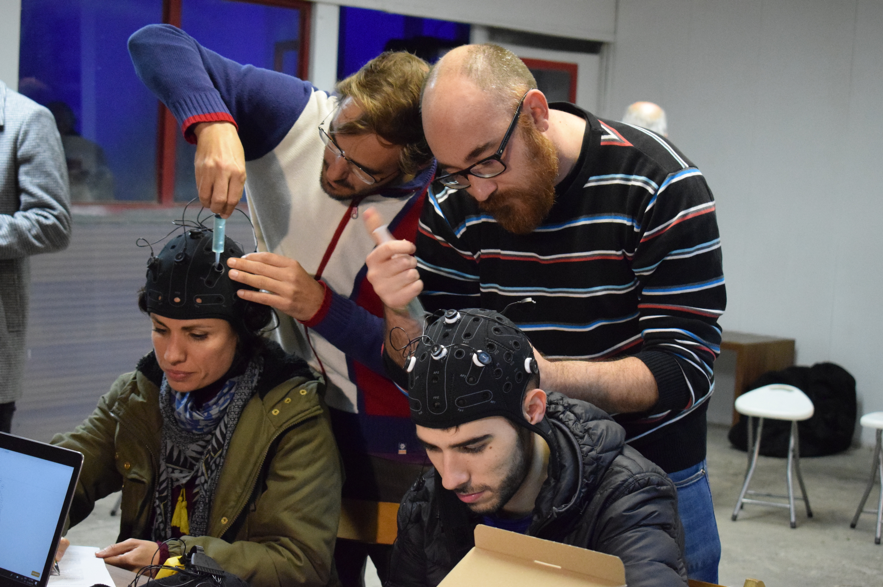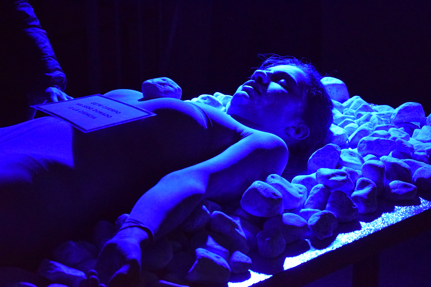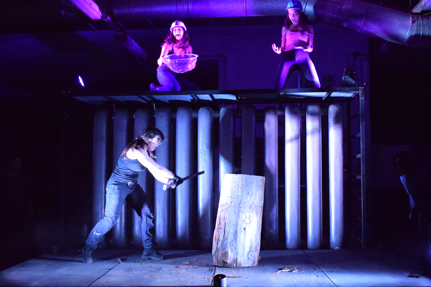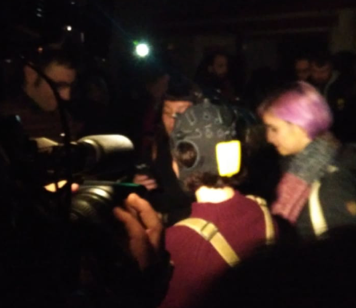There is a long history of art and science looking for each other. As Leonardo da Vinci said: “to develop a complete mind, study the science of art, study the art of science. Learn how to see. Realize that everything connects to everything else”.

Science and art, together
In 2008, at the University of Yale, a new interdisciplinary program was created at the Computer Science Department. In the program, during a whole year, students had to follow one of Yale’s art disciplines. They would, during that year, be integrating theatre, music, history of arts, or architecture with computer vision.
Also in other contexts have Neuroscience and arts met each other, such as in the field of music. There are cases in which musicians get inspired by the emotions of the audience and generate music (see our Brain Polyphony concert), or cases in which their own emotions are transformed into music (e.g., Sonar festival).

One more example involves a research by Professor Semir Zeki, chair in neuroaesthetics at University College London. Prof. Zeki and his team carried out a study to explore brain correlates when people were admiring beautiful paintings. The study of Zeki concluded that splendid works of art can give us joy the same as such we experience when we are looking at someone we are in love with! This process involves an increase in the blood flow in the medial orbitofrontal cortex, which is related to pleasure and desire, as well as to consciousness, as indicates research published in 2017 by chinese researchers.
Art and consciousness
In general, it is believed that art elevates consciousness because it influences the way we think and because it challenges our current point of view. In an event we organised on consciousness within the project Luminous (stay tuned for more blog posts to come), we concluded that to properly define consciousness one should consider aspects such as self-awareness, subjective experience, intelligence and emotions, all of which are typically induced and challenged by art.
But, what about various other kinds of artistic disciplines? Can theatre, for instance, collaborate with science? What shapes can such collaborations take? As a matter of fact, Starlab and Neuroelectrics participated in an integration act of theatre and science through a collaboration with a theatre company named La Fura Dels Baus.
La Fura dels Baus is a Catalan theatrical company founded in 1979. The company is known for their creative settings, interaction between audience and actors, and for playing with strong emotional reactions through fun, danger, disgust, mental reflections and fantasy.

In December 2018, La Fura Dels Baus inaugurated the Épica Foundation, born to create a multidisciplinary environment that brings together arts, humanities, science and technology. The collaboration aforementioned appeared in the context of the activity of the foundation.
Making these worlds collaborate was in fact not a new idea, and is something that had already been proposed by our ancestors, when astronomers, mathematicians, painters, writers and scientists were meeting together to challenge one another and evolve, bringing the frontiers of knowledge a step further.
Science and arts, although seemingly different, are somehow complementary. In arts, an artist may express him/herself in a totally free manner and a spectator may experience powerful emotional reactions of any kind through this art. Through humanities, the spectators’ emotional reactions and the artists’ way of expressing oneself can be studied in terms of previous and current personal or social behavioural constructs. As well, those emotional reactions can be analysed to extract conclusions about previous and current psychological/sociological profiles and unconscious patterns.
The measurement of reaction to art
Through science, the behaviours and emotional activations elicited by stimuli such as can be performances or art pieces, are expressed in terms of changes in the physiological signals. Using information from such signals one may objectively quantify the emotions felt during each moment of experiencing the art.
This was our role in the multidisciplinary collaboration with the theatrical company La Fura dels Baus: to capture in a subtle way the emotions of some spectators while they were experiencing a powerful theatre performance. The impact of this particular performance was even greater than that experienced attenting a regular theatre, as the actors were interacting heavily with the audience, inspiring strong emotional reactions.
We, thus, brought in this collaboration the science and a technological point of view in the interaction with a field of the arts. We placed Enobio devices on three volunteers, and by realizing the recordings directly on the SD cards, they were allowed to experience the whole performance wearing the devices in a completely wireless setting, making possible to combine neuroscience and arts “out of the lab”, naturally.

The recorded brain signals (EEG) and heart rate (ECG), together with a GoPro camera recording gave all the information needed to process the signals and extract conclusions. With those data, one could extract information about the emotions experienced during the artistic act. Measuring the emotions in a real-life interactive theatre setting is, thus, nowadays very much possible!
This post was originally written by Luminous team member Eleni Kroupi, and published at the Neuroelectrics website blog. It has been reproduced here with permission, with some edition for the sake of clarity and adaptation to the format.
Image credits:
Pictures of the Fura dels Baus act are copyright of the theatre company, and were re-used with permission from their Flickr account, stemming from the described collaboration.
Other pictures were taken by Luminous/Starlab and the Neuroelectrics team.
